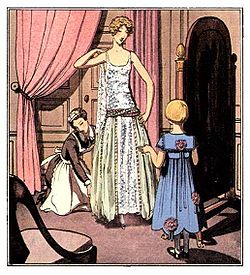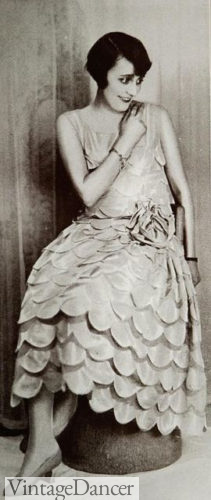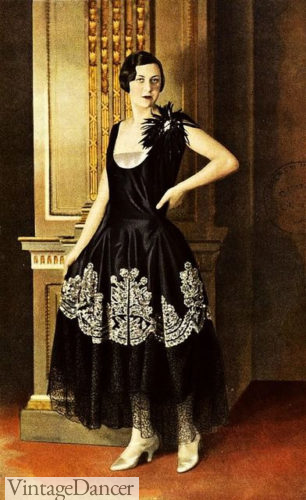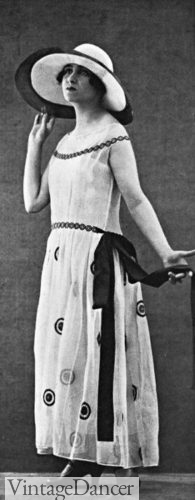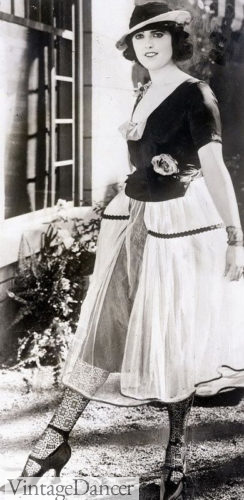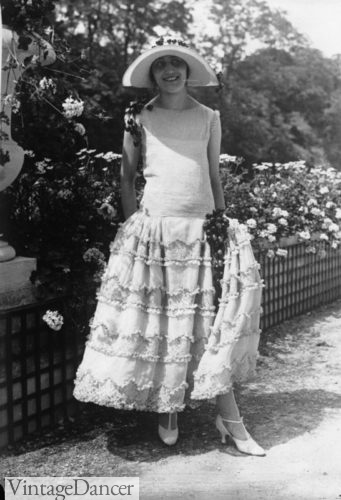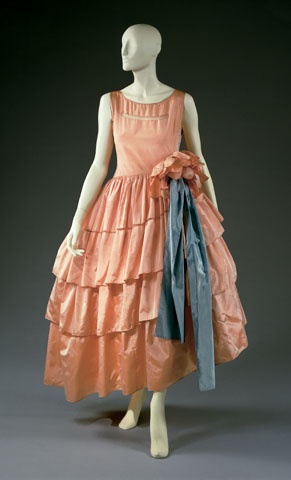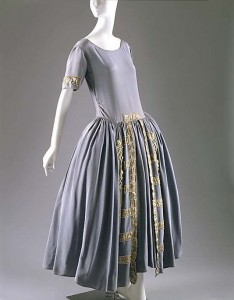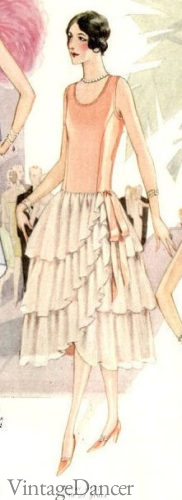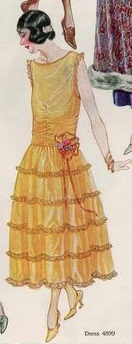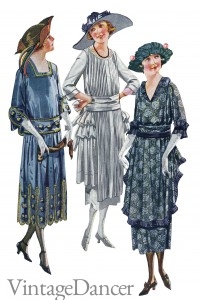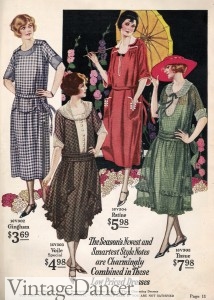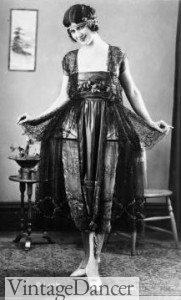What was a woman to do in the 1920s if she did not want the boxy chemise silhouette of a flapper? Chances are she went for the softer, more classic robes de style look that was ushered in by French designer Jeanne Lanvin. A robe de style dress featured a close fit on top and a longer, fuller skirt on the bottom. In fact, some of the skirts were so full that they required side petticoats, panniers, or hoops. The overall fullness of the dress worked well for just about any age or figure. This made it a good option both for the younger ladies of the Jazz Age who were too young for the flapper dress craze, as well as (ironically) their mothers, who may have preferred a style that was more forgiving.
Lanvin is credited with perfecting this style, but she certainly didn’t invent it. She borrowed it from the 17th and 18th century and brought it up to date. The fact that Lanvin only began making dresses when people asked her to make for them what she was making for her own daughter gives a hint to her flair for understanding what women would find appealing. Yet, she was not afraid to veer away from popular trends.
- 1927 petals Robe de style
- Black with embroidery Robe de Style
- Robe de garden party, 1924 by Jeanne Lanvin
- Sheer skirt robe de style
- Robe de Style tea dress
- Lanvin, silk robe de style evening dress 1927
- Lanvin Blue Robe de Style Gown made of Silk, Metal and Glass
- 1928 peach Robe de Style evening dress
- 1921 yellow tiered robe de style dress
Silk taffeta, velvet, satin, and a sheer lightweight fabric called organdy were common for robes de style. There was flexibility in the shape of the bodice which could be cut straight or fitted. The waist typically dropped to the middle of the hip. Often, the gowns were sleeveless. A tulle band may have been added to soften a scooped neckline. More glamorous styles featured a single, one-shoulder strap or a plunging “backward bodice.”
Even with the elegance of the design, robes de style were also fun. They did not just permit moving freely, but encouraged it as women twirled their skirts on the dance floor. The dresses could be flirty without being too sexy and wearable without being too casual.
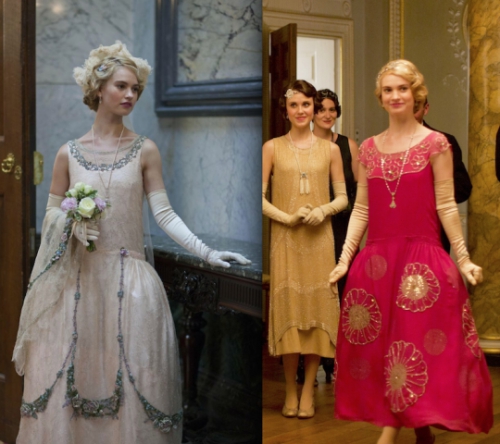
Rose from Downton Abbey wears the Robe de Style
Around 1921-1923, house, day, and afternoon versions of the robe de style were seen on trend alongside the straight fit chemise dresses. These were less full at the hip without the need for padded undergarments. Fullness was added to the hips with ruffles, pleats, apron treatments and layers of net or tulle. The waistband was very wide and did not always sit at the low waist, but could also hit at the natural waist or even empire line.
Lanvin’s line of clothes would grow to include something for the entire family, including the men, but she always kept an eye toward youthfulness, although not necessarily just for the young. Perhaps this is a lesson for the modern clothing designer that believes that trends are only for teenagers and everyone else is relegated to muted grays and shapeless sacks of fabric that pass for dresses. Lanvin told Vogue in 1934, “I act on impulse and believe in instinct.” For women of the 1920s looking beyond flapperdom, her instincts were right on the mark.
Learn more about Lanvin, her story, and her design from the 1920s. Or join the free 1920s Style Guide series for a complete guide to 1920s fashion history.
Debbie Sessions has been teaching fashion history and helping people dress for vintage themed events since 2009. She has turned a hobby into VintageDancer.com with hundreds of well researched articles and hand picked links to vintage inspired clothing online. She aims to make dressing accurately (or not) an affordable option for all. Oh, and she dances too.
